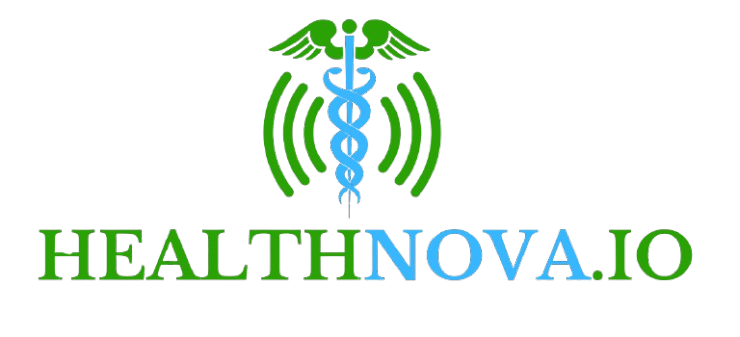Grow healthy lifestyle through psychotherapy
In the context of psychological treatment and mental health, it often tends to focus on the use of technologies and tools that rely on the management and resolution of difficulties for patients with valid resources.
However, each path must be must Consider the person in front of the patientA wide range of evaluations consisting of life areas that are directly related to the pathology displayed.
Analysis of lifestyles, food habits, sleeping rhythms, hobbies and recreational activities appear in all aspects of the elements needed to investigate and evaluate in the structural of personalized paths to actually measure the patient.
In this sense Grow healthy lifestyle Mental health also passes through the health of the body, and the same is true.
Inform the person compared to those who can be a good habit in sleep and food management. Your own physical activity It can form an important starting point to help the structure of a large treatment path, which can develop functional resources to promote human wells.
Physical activity as a good tool
Specifically in this article, we will focus on the aspect of attracting attention and playing an important role in improving psychological wells.Physical activity.
In fact, many scientific studies have shown that exercise not only helps physical health, but also has a deep and continuous effect on mental health.
But what is the meaning of physical activity?
Physical activity is a physical movement that includes energy consumption. It can be executed in structured contexts (sports, exercise, exercise) and un structured (walking, stairs climbing, household chores).
A Big concept that includes various activitiesRegardless of certain purposes, strength, frequency and duration.
Examples of physical activity are running, swimming, dance, gymnasium, play, bicycle.
Instead, it is a more specific concept and is different from the concept of all behaviors and movements of the body, volunteers or vision motor activities. Basic motor skills (e.g. walking, running, jumping, climbing, etc.), often includes basic motor techniques associated with growth and body development.
Therefore, it is main Focus on learning, development and improvement of motor skills In the context of education (school, children’s program) and treatment (rehabilitation and physical therapy).
Similarly, it is necessary to explain the concept of structured physical activity and the concept of rule, goals and specific preparations.
In fact, sports are one compared to the concept of the first defined physical activity. Highly structured shape It is noticeable as the existence of competition, rules and performance goals.
The impact of physical activity on anxiety and stress management
Exercise is known to be powerful Alliance for stress (Betti, 2014).
During physical activity, the body releases endorphins, which releases neurotransmitter associated with the feeling of neurotransmitter. These “hormones of happiness” can not only improve the mood, but also reduce cortisol levels. Hormones are mainly related to stress.
For this reason, physical activity in many treatment protocols indicates a real strategy to manage stressful situations.
For example, in front of the crisis that the patient can have, it cites the tip strategy (DBT) of Marsha M. Linean’s dialectical behavioral therapy (temperature, intensive exercise, progressive relaxation) of the dialectical behavioral therapy (DBT) for the borderline personality disorder that includes intense physical activity as a regulatory strategy.
Scientific studies have recorded how regular physical activity can be done. Reduce anxiety and stress symptomsIncreased psychological elasticity.
A study conducted by Herring E Coll. According to (2014), aerobic exercises, such as running or swimming, can significantly reduce anxiety symptoms in individuals with ordinary anxiety disorders.
Exercise and depression: complementary aid
Depression disorders are very widespread in estimates of 10% to 15% within the general population (Stopani, 2024). In particular, very delicate and frequent clinical conditions that require attention.
In this case, the study shows the benefits of physical activity. Depression.
In fact, exercise cannot be replaced by psychotherapy or pharmacological treatment in terms of effects, but it has been recognized as effective complementary intervention.
Physical activity can have a positive impact on depressive symptoms..
In the published study Archive Blumenthal and coll. (1999) Aerobic exercise (for example, fast walking or cycling) Reduce the symptoms of depression. Also, in some cases, it is reported that if the exercise is regularly practiced, it has had a longer effect on the drug.
The effect of exercise on cognitive reduction
Less discussed, but the same important aspects are about the effects of physical movement on cognitive decrease and neurochromatic diseases such as Alzheimer.
In fact, it is widely demonstrated how well the blood circulation on the brain is, how well the physical activity is, and the nerve plasticity and production of neurotrophin, a protein that promotes the health and growth of brain cells.
A study conducted by Norton and Coll. (2014) showed it Exercise can reduce the risk of dementia and the risk of cognitive reduction associated with age..
Physical activity not only improves memory and concentration, but also has a positive effect on emotional wells and moods. It is often contrasted with social isolation with cognitive impairment.
At the third age, regular physical or exercise in the group will greatly help to grow social ties that the absence does not contribute to promoting human wells.
The World Health Organization (WHO) was recommended before 2020 to obtain heart-irritation benefits from adults and 65-year-old Ultra (ULTRA 65) before 2020 or at least 150 minutes or 75 minutes or more of the two modes of the two modes.
Today’s most recent recommendations are not considered a minimum of 10 minutes in a row, and physical exercises are considered useful for health even if they are practiced for short sessions (EPICENTER, 2023).
Integrate exercise into everyday life
Therefore, it seems obvious as it is important within the psychotherapy path. Encourage patients to integrate physical activity into everyday life.
This does not necessarily mean being a sports or athlete, but rather a pleasant exercise helps you find a space to take care of your body and helps you find a space to take care of your body thanks to your life adapting to your lifestyle.
Activities can be different from the training sessions in yoga classes or gymnasiums. Even a 30 -minute walk a day, even a small amount of physical activity Positive impact on mental wells Especially if you practice regularly.
Also, as emphasized earlier, the practice physical activity becomes resource and management tools in every way, helping patients who manage situations and difficult feelings.
Therefore, the implementation of the physical activity routine is positively reconstructed every day. Promotion of human psychological wells Therefore, we will accompany the nursing path to improve the quality of life.
If the activity is executed in the company and contact with nature, the positive effect of finding greater reactions.
Mandatory reference literature
- Betti, F. (2014). Physical activity and stress management.
- Blumenthal, JA, Smith, PJ and HOFFMAN, BM (1999). Exercise and depression: Review of evidence. Internal Medicine, 159(3), 1109-1116.
- Herring, MP, O’Connor, PJ and Dishman, Rk (2014). Effect of exercise training on patients’ anxiety severe: systematic review. Medical Records Archives, 172(1), 27-38.
- Linehan, MM (1993). Cognitive treatment of borderline personality disorder. New York: Guilford Press. Trade. that., Cognitive behavioral treatment of borderline disturbance: DBT model. Milan, Rafa Elo Cortina Editotor, 2021
- Marsigli, N. (June 14, 2024). Borderline personality disorder (BPD).
- Norton, S., Matthews, Fe, Barnes, De, Yaffe, K., & Brayne, C. (2014). Possibility to prevent Alzheimer’s disease: Population -based data analysis. Lancet Neurology, 13(8), 846-849.
- Stopani, E. (March 22, 2024). Depression: Symptoms, Causes and Treatment.
External connection
- Evosition -physical activity data











































